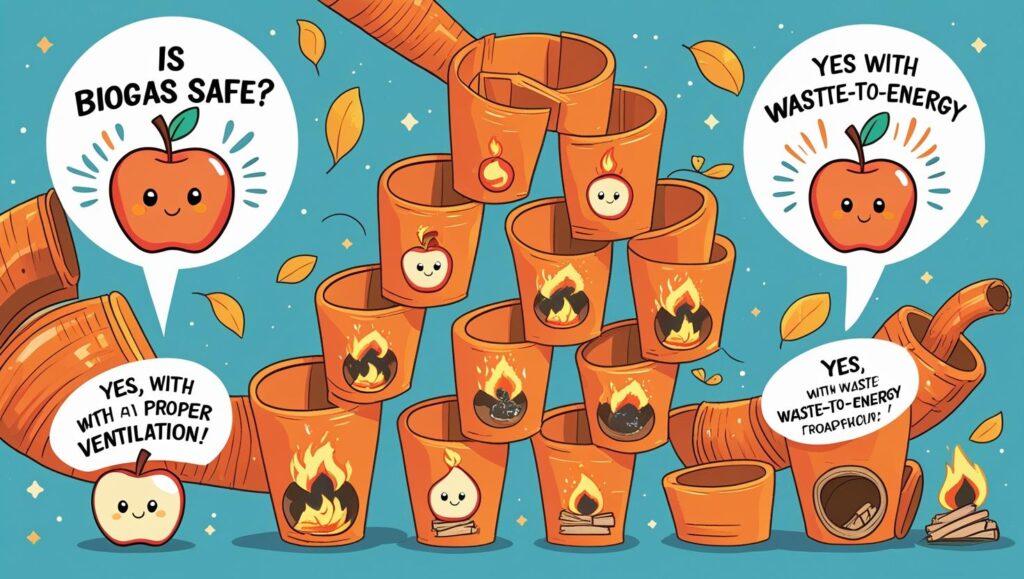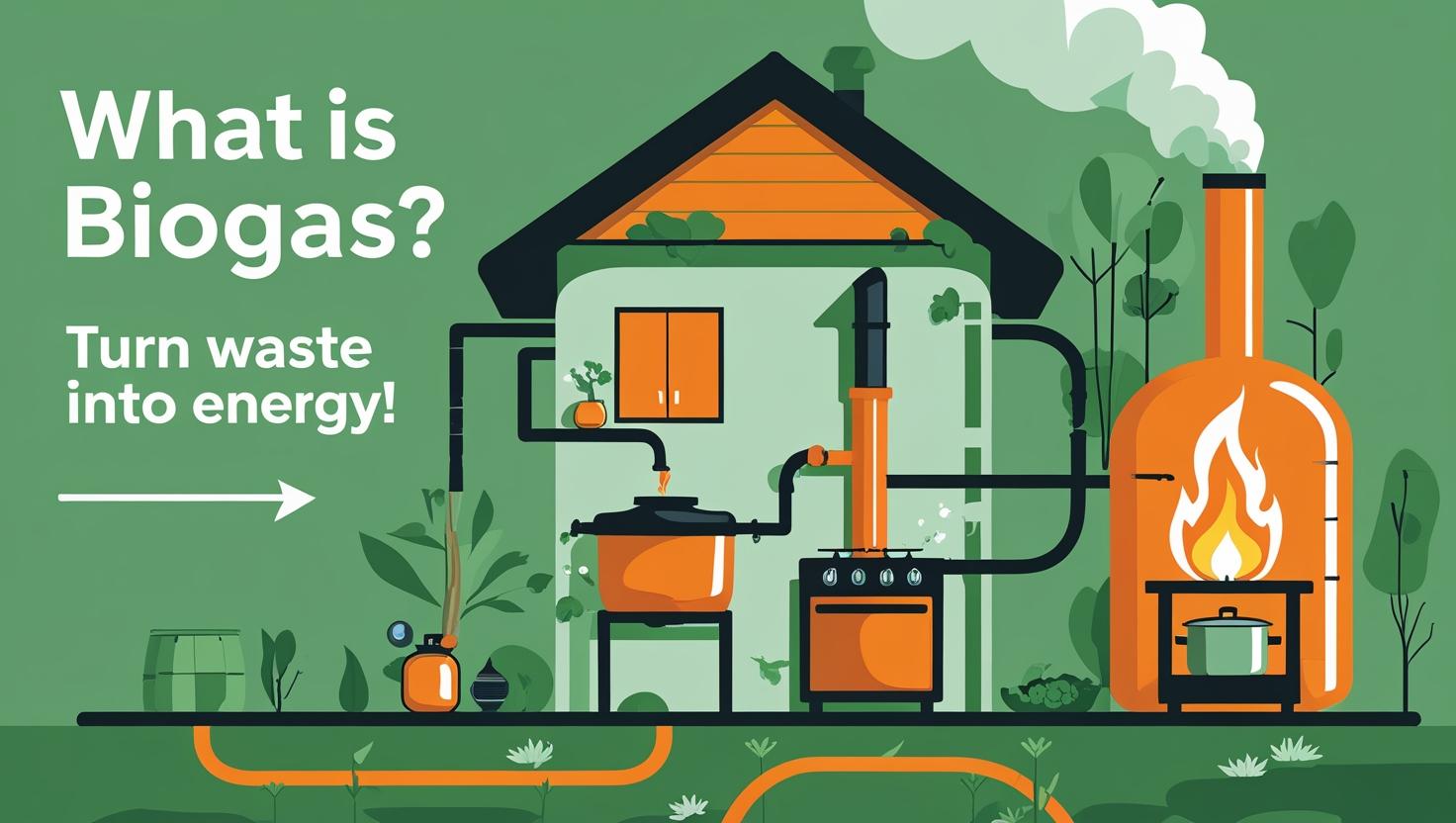Methane from organic waste
♻️ Biogas is a renewable energy source produced when organic waste (like food scraps or manure) breaks down in an oxygen-free environment. Think of it as nature’s recycling program—turning trash into usable fuel!
How is Biogas Made?
Biogas forms through anaerobic digestion, where bacteria decompose organic matter in four stages:
- Hydrolysis: Complex waste (e.g., carbs, proteins) breaks into simple sugars.
- Acidogenesis: Sugars convert into fatty acids.
- Acetogenesis: Acids turn into acetic acid, CO₂, and hydrogen.
- Methanogenesis: Methane-producing bacteria create biogas.
🔬 Key Fact: The process mimics how methane forms in cow stomachs or landfills—but controlled systems capture it for energy!
What’s in Biogas?
| Component | % in Biogas | Notes |
|---|---|---|
| Methane (CH₄) | 50–70% | Burns cleanly for energy. |
| Carbon Dioxide (CO₂) | 30–50% | Non-combustible; removed for upgrades. |
| Hydrogen Sulfide (H₂S) | <1% | Corrosive; must be filtered. |

Uses of Biogas
- Cooking: Replace LPG/propane in stoves (see home biogas systems).
- Heating/Electricity: Power generators or district heating plants.
- Transport Fuel: Upgraded to biomethane for vehicles.
🌱 Bonus: The leftover digestate is a natural fertilizer!
Benefits of Biogas
✅ Eco-Friendly: Reduces landfill methane (25x worse than CO₂ for climate change).
✅ Waste Solution: Diverts organic waste from landfills.
✅ Energy Independence: Cuts reliance on fossil fuels.
⚠️ Challenges: High upfront costs, maintenance (e.g., removing H₂S), and warm climates optimize production.
| Component | % in Biogas | Notes |
|---|---|---|
| Methane (CH₄) | 50–70% | Primary fuel source; burns cleanly. |
| Carbon Dioxide (CO₂) | 30–50% | Removed when upgrading to biomethane. |
| Hydrogen Sulfide (H₂S) | <1% | Corrosive; requires filtering. |
Biogas vs. Other Renewables
Unlike solar/wind, biogas:
- Works 24/7 (not weather-dependent).
- Solves waste management problems.
🔗 Further Reading:
Yes! With proper ventilation and safety measures (like methane detectors), home biogas systems are as safe as propane tanks. Always follow manufacturer guidelines.
A small home digester needs about 2 kg of food waste daily to produce 1–2 hours of cooking gas. Farms/larger systems require ~50 kg of manure/day.
